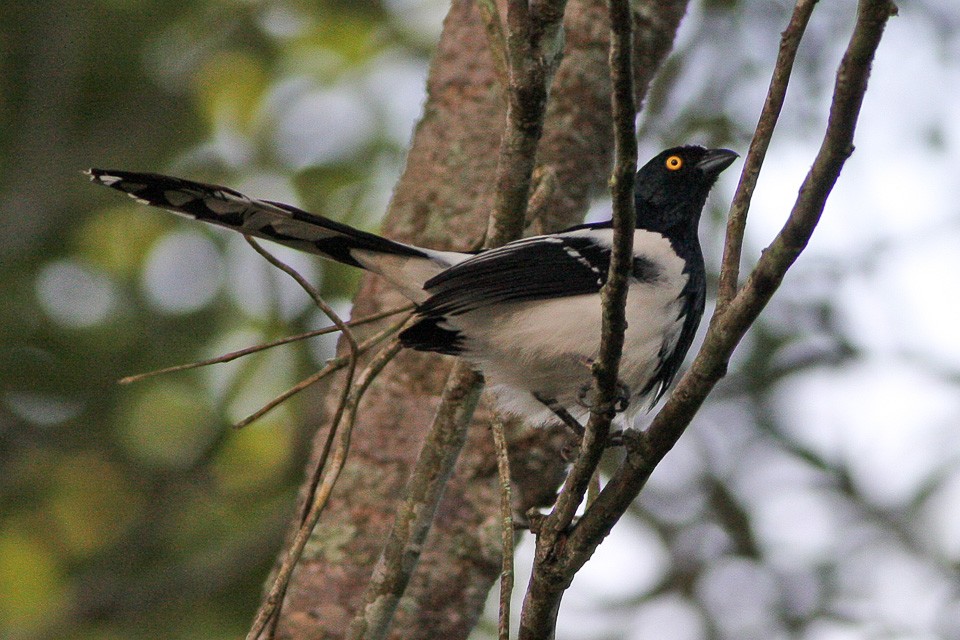Magpie Tanager
A species of Magpie Tanagers Scientific name : Cissopis leverianus Genus : Magpie Tanagers
Magpie Tanager, A species of Magpie Tanagers
Botanical name: Cissopis leverianus
Genus: Magpie Tanagers
Content
Description General Info
Description
The magpie tanager (Cissopis leverianus ) is a South American species of tanager. It is the only member of the monotypic genus Cissopis. As suggested by its common name, this blue-black and white species is superficially reminiscent of a European magpie. With a total length of 25–30 cm (10–12 in), a large percentage of which is tail, it is the longest species of tanager. It weighs 69-76 g. It is widespread in humid tropical and subtropical woodland, plantations, second growth, and parks in South America east of the Andes. It is absent from drier regions (e.g. the Caatinga) and most of north-eastern Brazil. In densely forested regions, it mainly occurs in relatively open sections (e.g. near major rivers). In such regions it is spreading with deforestation, which opens up the habitat. It is largely restricted to lowlands, but occurs up to an altitude of 2,000 m (6,600 ft) on the east Andean slopes. It is common throughout most of its range, but rarer in the Guianas. Typically occurs in conspicuous, noisy pairs or groups of up to 10 individuals. Commonly takes part in mixed-species flocks. Often moves long tail up and down. Eats seed, fruits and insects. The cup-shaped nest is lined with grass, leaves or other plant materials and is located low in trees near the ground or in shrubs in dense vegetation. The 2 eggs are reddish-brown with brown spots. The incubation time is 12–13 days in captivity. 
Size
26 cm
Nest Placement
Tree
Habitat
The magpie Tanager predominantly occupies the edges of tropical forests and rivers and is often found in secondary growth areas. It thrives in lowland and foothill regions that feature semiopen to open woodland, secondary forests, and semiopen floodplains, particularly along the fringes of humid forests. This species is also a regular in riparian regions and clearings and can sometimes inhabit plantations and developed lands adjacent to forested areas.
Dite type
Omnivorous
General Info
Feeding Habits
Bird food type
Species Status
Not globally threatened.
Scientific Classification
Phylum
Chordates Class
Birds Order
Perching birds Family
Tanagers Genus
Magpie Tanagers Species
Magpie Tanager 